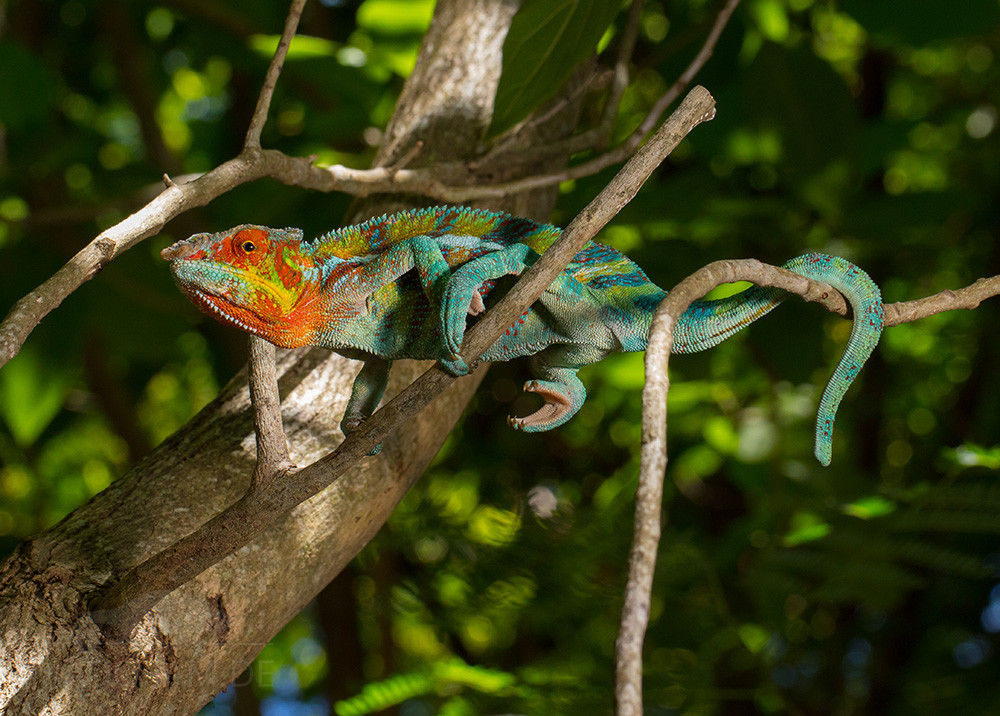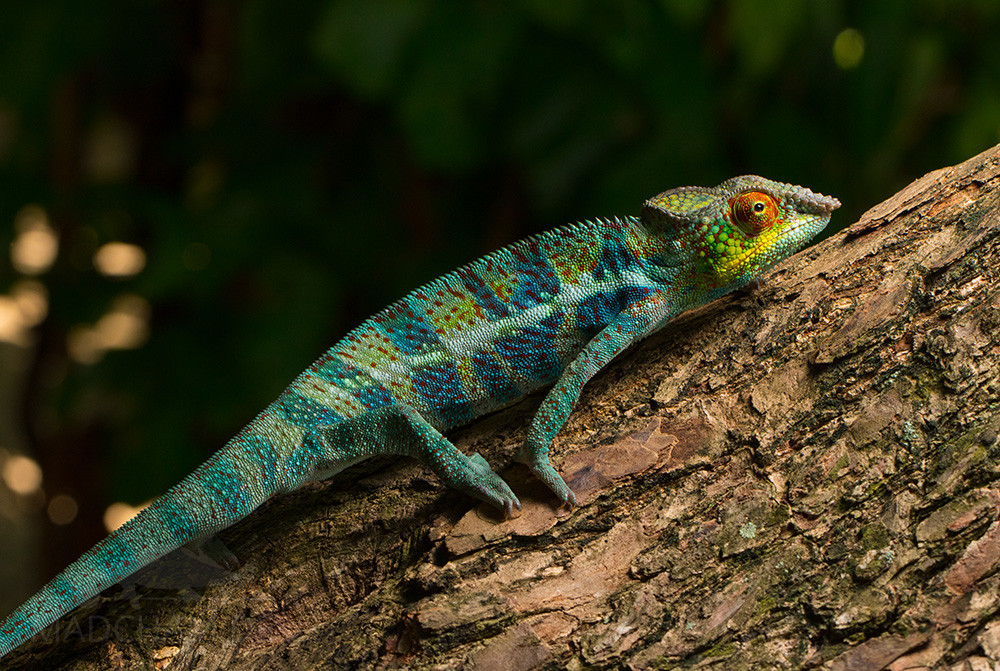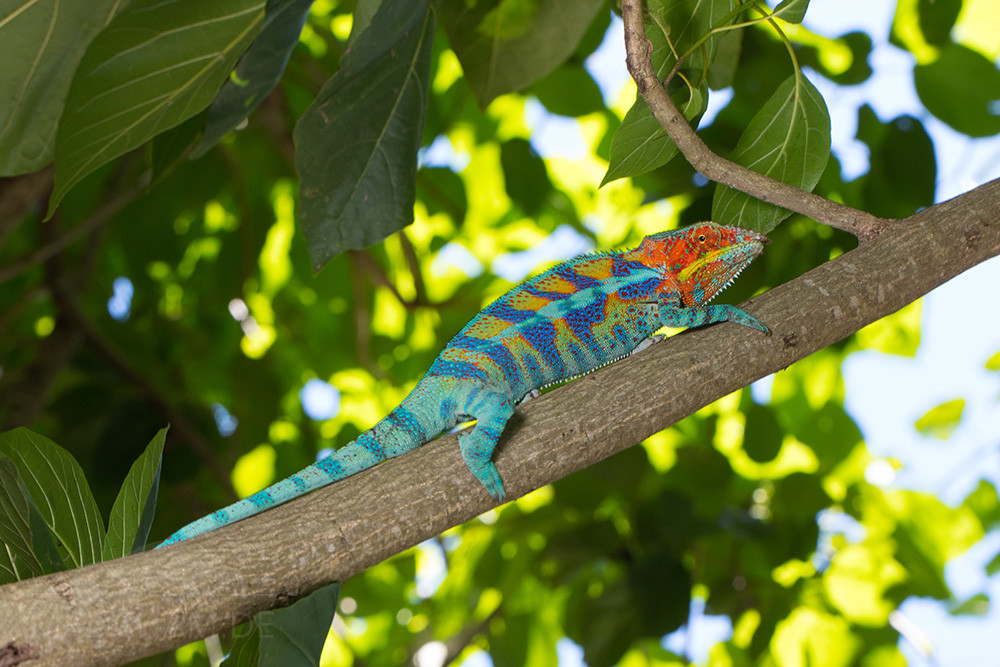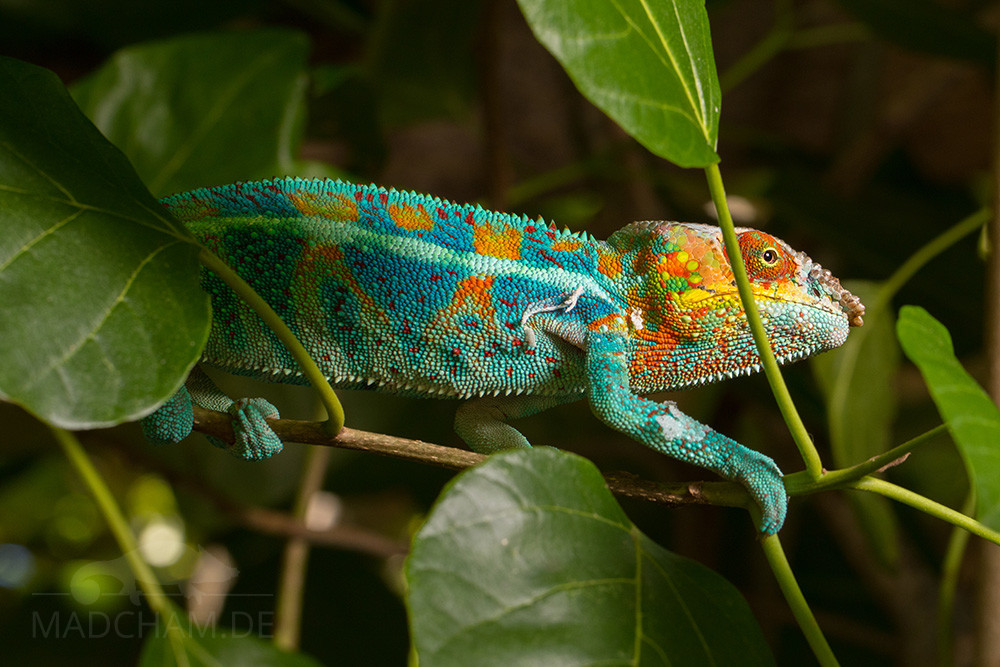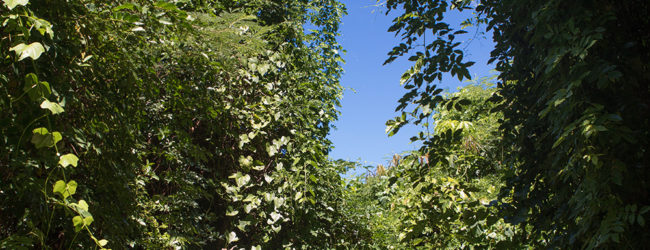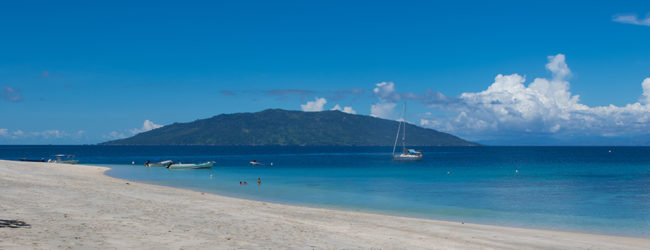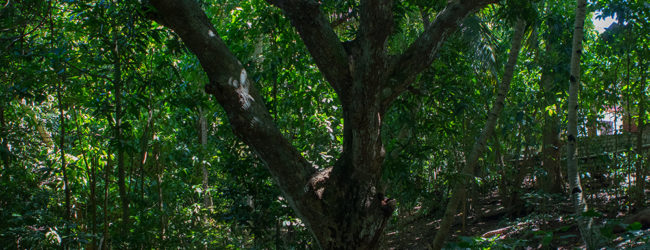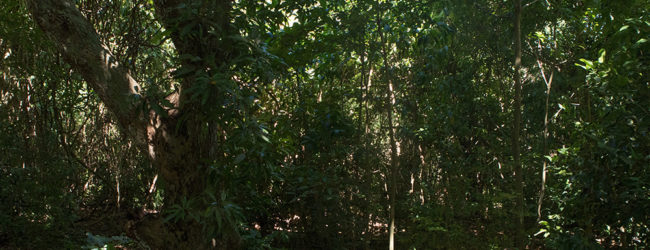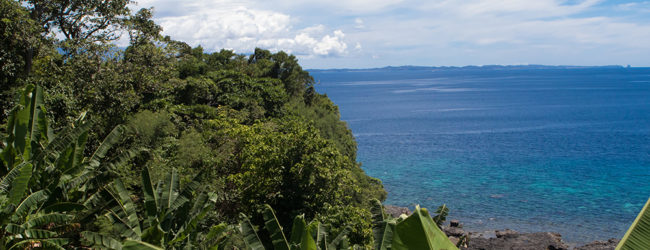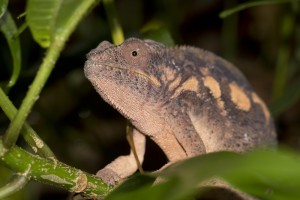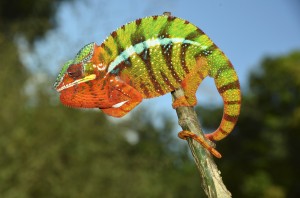Distribution of the local form Nosy Tanikely:
Nosy Tanikely is a tiny paradisiacal island of 3.41 km², which is well reflected in its name. The Malagasy Nosy Tanikely means “island of little earth” or “small earth”. The often-used spelling “Tanihely” with h instead of k is no spelling mistake, but only the name of the park in the dialect of the local population, the Sakalava. The island lies in the northwest of Madagascar, a good eight kilometers southeast of the well-known large island Nosy Be in the channel of Mozambique. The whole island, as well as the surrounding sea, are part of the National Park Nosy Tanikely, so they are under protection. Touching or removing chameleons is strictly forbidden here. Since the island was used only for day trips by tourists before 2011, when it was officially granted the status as a national park, and since no humans ever lived there, the panther chameleons have been living here undisturbed for much longer. Snorkellers and divers are more interested in the animals underwater than on land.
Appearance of the local form:
As a local form completely isolated from the mainland and other islands, the male panther chameleons on Nosy Tanikely are very colorful. Surprisingly, they do not resemble the “neighboring” local forms Nosy Be and Nosy Faly, that both are characterized by much blue. Instead, the male panther chameleons on Nosy Tanikely wear blue and turquoise green stripes and an orange-colored head with blue accents, especially on the throat. The body’s blue, partly turquoise stripes are interspersed with red dots. During stress or when the animals are warmed up by the sun, the turquoise stripes of the body turn partly bright orange.
Table of weights
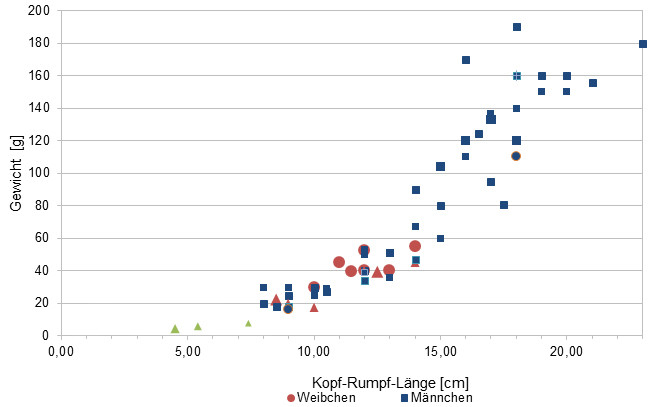
Gewicht = weight in grams, Kopf-Rumpf-Länge = snout-vent-length in cm, Weibchen = females, Männchen = males
Since 2015, we have been measuring the weights of chameleons found by us in Madagascar, as far as the animals (and our scales) participate. In the long term, we aim to obtain an average weight in relation to snout-vent-length (measured from the tip of the nose to the cloaca) for each species from as many measurements as possible. It is important to know that all weights were measured towards the end of the rainy season (= best food supply), so these should be maximum weights on Madagascar. Triangular symbols in females mean not pregnant, round symbols mean pregnant. In Furcifer pardalis, contrary to our original assumption, it has so far turned out that there are no serious differences in the ratio of SVL to weight between the individual local forms.
| Jan | Feb | Mar | Apr | May | Jun | Jul | Aug | Sep | Oct | Nov | Dec | |
| Average temperature | 27 | 27 | 27 | 26 | 25 | 24 | 24 | 25 | 25 | 26 | 27 | 27 |
| Minimum temperature | 23 | 23 | 24 | 23 | 22 | 20 | 20 | 19 | 20 | 22 | 23 | 23 |
| Maximum Ttemperature | 31 | 31 | 31 | 31 | 31 | 29 | 29 | 29 | 30 | 31 | 31 | 31 |
| Rain days | 21 | 19 | 17 | 12 | 8 | 8 | 8 | 8 | 7 | 8 | 11 | 17 |
We have collected the data given above over several years with thermometers and hygrometers at the finding places of the chameleons. "Average temperature" means that values of a whole month have been calculated to one average value per month. For example all measured minimum temperature values of February have been calculated to one average minimum temperature for February. In plain language, this means single peak values of a day may be a little higher or lower than the average minimum and maximum temperatures. It is possible that a location has an average maximum temperature of 29°C, but one day during that month it had 33°C or even 35°C there.
An example of a daily temperature curve on Nosy Tanikely in the rainy season can be found below, which was recorded with data loggers in 2024.
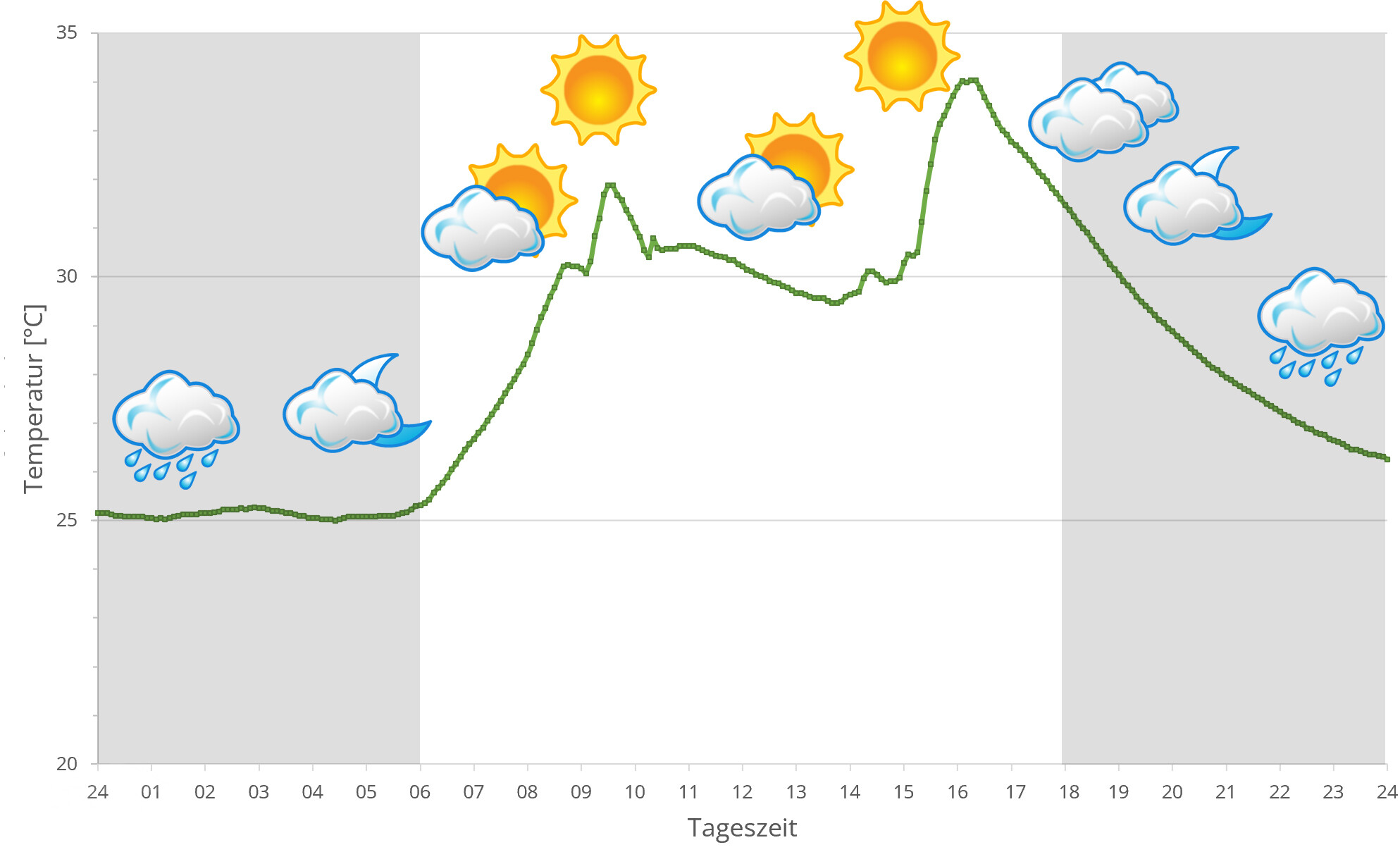
Climate on the islands in front of Madagascar's north west coast is very warm all year long. Temperatures over 30°C are usual. In the night, temperatures hardly drop below 25°C, during rainy season they may drop much lower until 19°C.
Durin rainy season, it rains a lot and very often. From April to October, climate is mainly dry and sunny on the islands, but it still rains shortly on a regular base.
In 2024, we used data loggers to measure the relative humidity on several days on Nosy Tanikely during the rainy season, the data can be found below.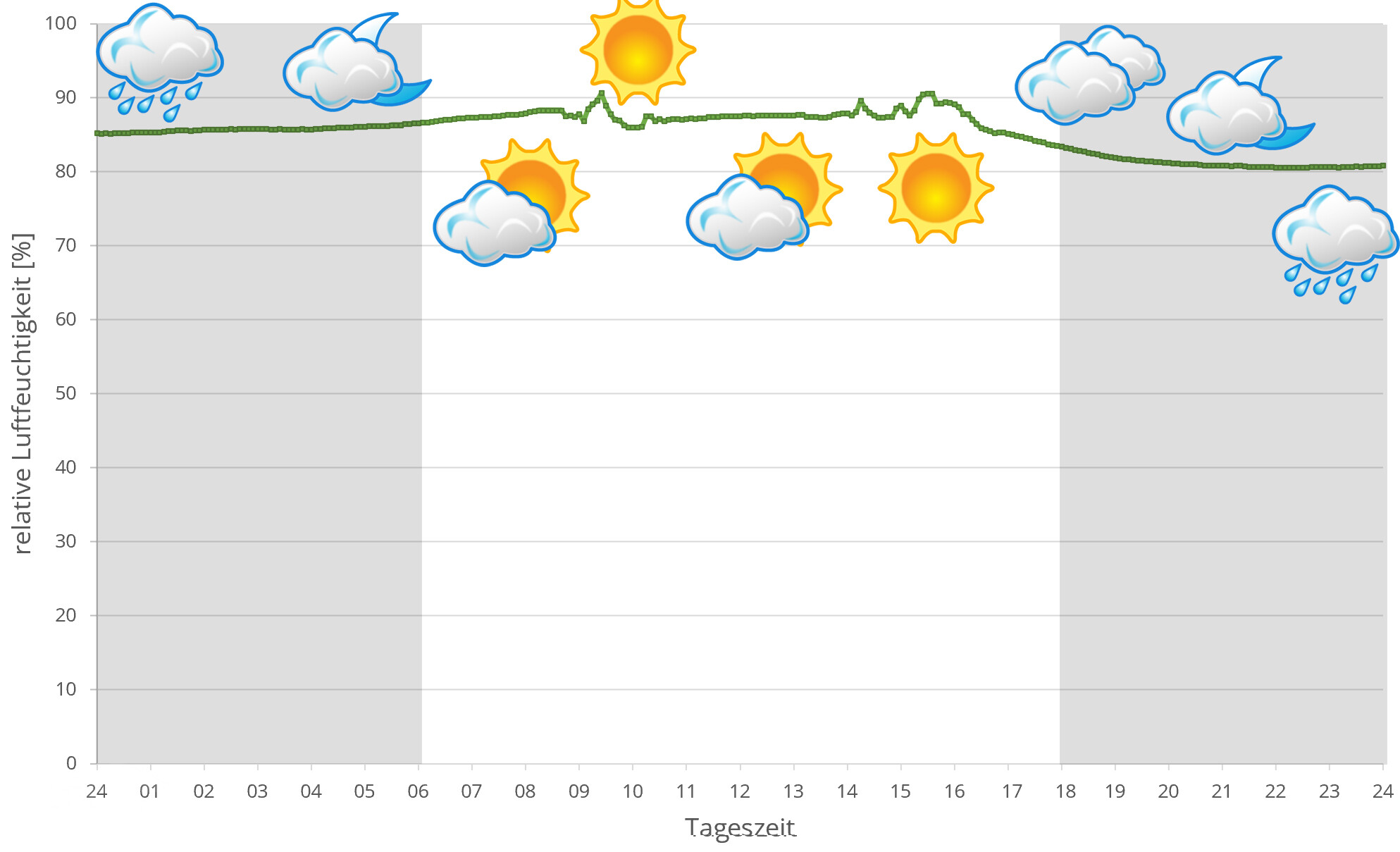
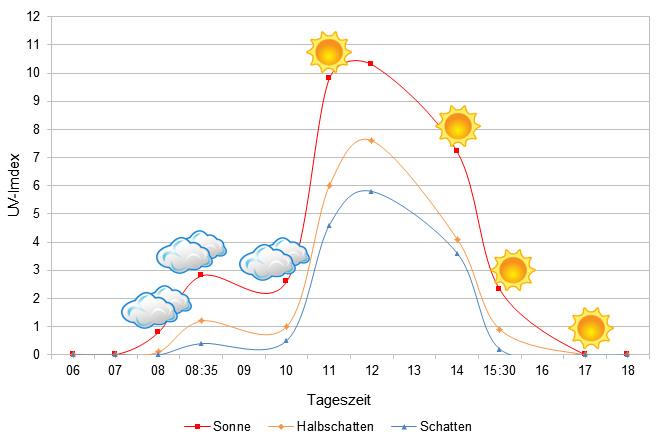 Tageszeit = day time, Sonne = sun, Halbschatten = half shade, Schatten = shade
Tageszeit = day time, Sonne = sun, Halbschatten = half shade, Schatten = shade
We have measured UVB data with a Solarmeter 6.5 in spring (end of March) at the peak of activity of chameleons in Madagascar. We always measured the values that a chameleon could maximally reach in its habitat.
In 2024, in addition to other climate data, we also measured the air pressure at the places we visited in Madagascar. The following data is from days during the rainy season on Nosy Tanikely. The X-axis shows the time of day or night.in Madagascar, the day begins around 6 a.m., night falls as early as 6 p.m. The Y-axis shows the atmospheric air pressure in hPa.
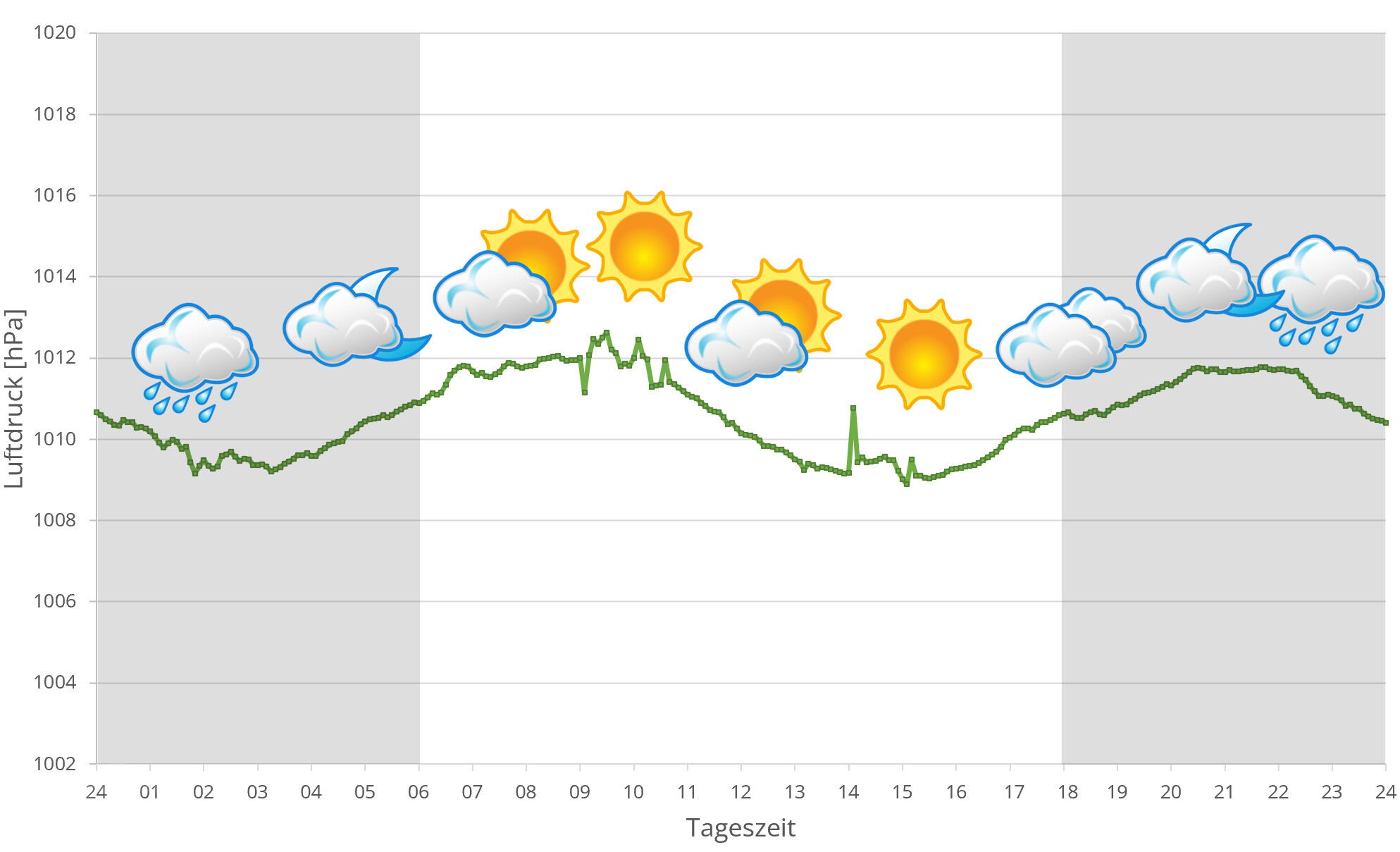
Habitat:
Nosy Tanikely only has a small forest, but it provides good living conditions for panther chameleons. A few banana plants and palms, as well as other imported secondary vegetation such as tamarind, can be found in between. The soil consists only of sand on the beach itself and is rather earthy-sandy mixed in the forest, covered by a thick layer of leaves and streaked with rocks.

